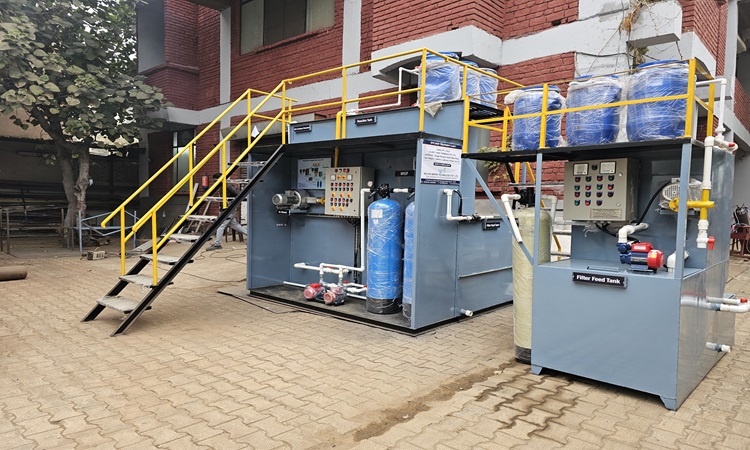Effluent Treatment Plants (ETPs) have become an essential part of modern industries as environmental norms grow more stringent and sustainability becomes a global priority. Industries generate wastewater filled with contaminants such as chemicals, oils, grease, suspended solids, toxic metals, and organic impurities. If this wastewater is discharged directly into natural water bodies, it leads to irreversible environmental damage. Here is where an ETP plays a critical role — ensuring wastewater is treated, purified, and made safe for reuse or discharge.
Introduction to Effluent Treatment Plants
An Effluent Treatment Plant is a wastewater treatment system designed to remove harmful pollutants from industrial effluents. Every industry produces different types of waste, depending on its operations — from chemicals and oil to dyes, solids, and heavy metals. An ETP is engineered to handle these contaminants and treat the wastewater through a combination of physical, chemical, and biological methods.
ETPs are widely used in industries such as:
- Chemical and pharmaceutical manufacturing
- Textile dyeing and washing
- Food and beverage processing
- Oil & petroleum refineries
- Metal finishing and electroplating
- Paper and pulp mills
- Hospitals and laboratories
- Automobile and engineering units
Why Industries Need an ETP?
Industrial effluents contain a wide range of pollutants that can damage ecosystems, harm human health, and contaminate water resources. Without an ETP, industries risk:
- Environmental degradation
- Penalties and legal actions under pollution control laws
- Harm to public health
- Loss of corporate reputation
- High water consumption without recycling options
How an Effluent Treatment Plant Works?
Although the design varies depending on the type of wastewater, most ETPs follow a combination of four key treatment stages: Preliminary, Primary, Secondary, and Tertiary treatment.
- Preliminary Treatment
This stage removes large physical impurities.
Processes include:
- Screening: Removes plastics, rags, leaves, paper, wood pieces, etc.
- Grit Removal: Eliminates sand, gravel, and heavy inorganic particles.
- Oil & Grease Trap: Separates floating oils and fats from the wastewater.
- Primary Treatment
This stage focuses on separating suspended solids and allowing the wastewater to settle.
Common processes include:
- Coagulation: Chemicals like alum or ferric chloride are added to destabilize fine particles.
- Flocculation: Gentle mixing helps small particles combine into heavier flocs.
- Primary Sedimentation Tank: Solids settle at the bottom, forming sludge.
- Secondary (Biological) Treatment
This stage treats dissolved organic waste using microbial activity.
Two main types:
- a) Aerobic Treatment Systems
- Activated Sludge Process (ASP)
- Sequential Batch Reactor (SBR)
- Moving Bed Biofilm Reactor (MBBR)
- Extended Aeration
In these systems, air is supplied to promote the growth of microorganisms that consume organic pollutants.
- b) Anaerobic Treatment Systems
- UASB (Upflow Anaerobic Sludge Blanket)
- Anaerobic digesters
- Tertiary or Advanced Treatment
This stage polishes the water to high-quality standards.
Common tertiary processes include:
- Sand/Carbon filtration
- Ultra-filtration (UF)
- Reverse Osmosis (RO)
- Ion exchange
- UV disinfection or chlorination
Sludge Treatment
Sludge generated during primary and secondary stages is processed through:
- Thickening
- Dewatering
- Drying
Key Components of an ETP
A standard ETP consists of:
- Equalization tank
- Flash mixer and flocculator
- Clarifiers
- Aeration tank or bio-reactor
- Tube settlers
- Pressure sand filter (PSF)
- Activated carbon filter (ACF)
- Sludge handling system
- Disinfection units
- PLC/SCADA automation (optional)
Benefits of Installing an Effluent Treatment Plant
Installing an ETP offers numerous environmental, operational, and financial benefits:
- Environmental Protection
ETPs prevent toxins, chemicals, and pollutants from contaminating rivers, lakes, and soil.
- Regulatory Compliance
Industries meet CPCB and SPCB discharge norms, avoiding legal penalties.
- Water Reuse and Conservation
Treated water can be recycled for non-potable applications, reducing dependence on freshwater sources.
- Cost Savings
Reduced water bills, lower sludge disposal costs, and higher operational efficiency.
- Supports Sustainability Goals
ETPs help companies adopt eco-friendly operations and strengthen their ESG profile.
- Improved Corporate Image
Showing responsibility toward the environment enhances brand trust and customer loyalty.
Applications of ETP in Various Industries
Different industries use ETPs for specific needs:
- Textile: Removes dyes, chemicals, and suspended solids.
- Pharmaceutical: Treats toxic organic compounds.
- Food & Beverage: Eliminates high BOD and COD from organic waste.
- Metal Processing: Removes heavy metals and oils.
- Healthcare: Treats contaminated medical wastewater.
Conclusion
Effluent Treatment Plants are indispensable for industries committed to environmental safety, legal compliance, and resource sustainability. With the increasing demand for clean water, ETPs play a vital role in reducing water pollution and enabling efficient water reuse.
Industries that invest in advanced ETP systems not only protect the environment but also ensure long-term operational efficiency, cost savings, and a positive corporate reputation.
If designed and maintained properly, an ETP becomes an eco-friendly asset that supports industries in achieving a greener future.



